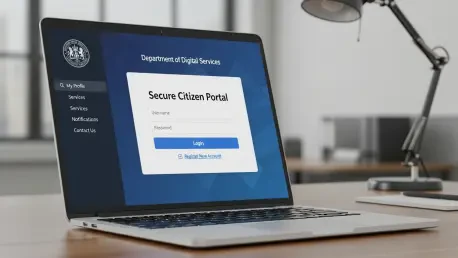Today, we’re thrilled to sit down with Donald Gainsborough, a political savant and leader in policy and legislation, who heads Government Curated. With his deep expertise in government technology and accessibility, Donald offers invaluable insights into the pressing challenges and opportunities surrounding state compliance with federal accessibility rules for websites. In this conversation, we explore the significance of these regulations for people with disabilities, the hurdles states face in securing funding, the practical steps being taken to enhance digital access, and the potential risks of inaction as the April 2026 deadline looms.
How critical is the federal accessibility rule for state governments at this moment, and what does it mean for individuals with disabilities trying to use government websites?
The federal accessibility rule is absolutely pivotal right now. It’s a game-changer under the Americans with Disabilities Act, mandating that state and local government websites and apps meet specific standards to ensure they’re usable for everyone. For people with disabilities, this means breaking down barriers that have long prevented them from accessing vital services—think applying for benefits or getting public information. Without these changes, many are effectively locked out of essential government resources. This rule isn’t just about compliance; it’s about equity and ensuring no one is left behind in the digital age.
What’s the urgency like for states to meet the April 2026 deadline for compliance?
The urgency is real and pressing. With just over a year until the deadline for larger governments, there’s no time to waste. Many states are already behind—some are still in the planning phase, while others lack funding or clear strategies. Delaying action risks not only legal consequences like lawsuits under the ADA but also reputational damage. States need to act now to build the infrastructure and train staff, because retrofitting websites and apps at the last minute is neither cost-effective nor feasible.
With 70% of state CIOs prioritizing accessibility in their goals, can you share some concrete ways states are turning this focus into action?
Absolutely. States are taking meaningful steps, like revamping websites to meet technical standards—ensuring they’re navigable by keyboard, adding captions to videos, and providing alt text for images. Some are also conducting regular audits to catch and fix issues. Beyond that, there’s a push to integrate accessibility into statewide design frameworks, treating it with the same importance as cybersecurity. It’s about building systems that are inclusive from the ground up, not just patching problems after the fact.
How are states striving to go beyond the basic requirements of the ADA in their accessibility efforts?
Many states are setting a higher bar by codifying accessibility into their own regulations and statutes, which often exceed federal mandates. Some are establishing formal annual reviews to ensure ongoing compliance and improvement. Others are creating design standards that prioritize accessibility alongside privacy and security, ensuring a holistic approach. This isn’t just about checking boxes; it’s about fostering a culture of inclusion where digital services truly serve every citizen.
Funding remains a major obstacle, with over half of states lacking dedicated budgets for accessibility. What do you think makes securing this funding so challenging?
The challenge often boils down to competing priorities and tight budgets. Accessibility isn’t always seen as urgent compared to things like infrastructure or public safety, even though it’s just as critical for citizen engagement. Plus, the cost of compliance can be staggering—potentially in the millions—and with federal funding streams drying up, states are left scrambling. There’s also a lack of awareness among some lawmakers about the scope of this issue, which makes it harder to get buy-in for dedicated resources.
Are lawmakers and budget planners fully aware of the potential costs tied to this compliance effort?
Not always. While some are starting to grasp the scale—thanks to estimates from the Department of Justice and advocacy from CIOs—others still underestimate the investment needed. It’s not just about updating websites; it’s about training staff, hiring specialists, and maintaining systems over time. Without clear communication about these costs, accessibility often gets pushed to the back burner in budget discussions, which is a risky oversight.
How are CIOs and other leaders working to persuade legislators to allocate more funding for accessibility initiatives?
CIOs are getting creative. They’re framing accessibility as both a moral and legal imperative, highlighting the risk of lawsuits and reputational harm if states don’t comply. Some are presenting data on how many citizens are affected by inaccessible services, making it a voter issue. Others are pushing for incremental funding—small, consistent investments rather than one big ask—to make it more palatable. It’s about building a compelling case that this isn’t optional; it’s essential for good governance.
There seems to be a perception among some state leaders that 2026 is far off or that the rule might not hold. Have you encountered this mindset, and how do you address it?
Yes, I’ve seen this attitude firsthand. Some leaders think 2026 gives them plenty of time or question whether the rule will even be enforced, especially with potential shifts in federal priorities. I counter this by emphasizing that accessibility isn’t just a federal mandate—it’s a fundamental right. I also point out that lawsuits under the ADA are already on the rise. Waiting to act isn’t just risky; it’s shortsighted. States need to lead on this, not react under pressure.
What are the biggest risks for states if they continue to delay action on accessibility compliance?
The risks are significant. Legally, non-compliance opens the door to lawsuits, which are costly and damaging to public trust. Reputationally, failing to prioritize accessibility sends a message that certain citizens don’t matter. Operationally, last-minute fixes are far more expensive and disruptive than proactive planning. And most importantly, delays mean people with disabilities continue to face barriers, which undermines the very purpose of government services.
Among the specific accessibility goals—like keyboard navigation or video captions—which do you think poses the greatest challenge for states to implement?
I’d say keyboard navigation often proves toughest. It requires a complete rethink of how websites are coded and structured, which can be a massive undertaking for older systems. Many state websites weren’t built with accessibility in mind, so retrofitting them to be fully usable without a mouse is technically complex. It’s not just about the tech—it’s about ensuring every function, from forms to menus, works seamlessly, which takes time and expertise.
What technical hurdles do states frequently encounter when working toward these accessibility goals?
There are quite a few. Legacy systems are a big one—older platforms often aren’t compatible with modern accessibility standards, so they need major overhauls. Then there’s the sheer volume of content; adding alt text or captions across thousands of pages and videos is daunting. Testing for compliance is another hurdle—ensuring every element works across different devices and assistive technologies is a meticulous process. These challenges require both technical know-how and sustained effort.
How are states equipping their teams with the training and tools needed to meet these accessibility standards?
States are stepping up by offering specialized training for developers and content creators on accessibility best practices, like using proper HTML markup or creating accessible PDFs. Some are investing in automated testing tools to scan for issues, though human review is still crucial. Partnerships with vendors who specialize in accessible design are also becoming common. It’s about building capacity internally while leaning on external expertise to bridge gaps.
NASCIO recommended hiring digital accessibility coordinators, yet not all states have done so. What’s holding some states back from creating this role?
The biggest barrier is funding. Some states have been denied budget requests for this position multiple times because it’s seen as a ‘nice-to-have’ rather than a necessity. There’s also a lack of understanding about the role’s impact—some leaders don’t realize how much a dedicated coordinator can streamline efforts and ensure compliance. Without that buy-in, it’s hard to justify the expense, especially in lean budget years.
For states that have brought on a digital accessibility coordinator, what kind of impact have you seen in their progress?
The difference is night and day. Coordinators act as a central point of accountability, driving strategy and ensuring accessibility isn’t an afterthought. They bridge gaps between IT teams and other agencies, making sure everyone’s on the same page. States with coordinators often see faster implementation of standards, better training programs, and more consistent audits. It’s a role that pays for itself by preventing costly missteps and keeping efforts focused.
Looking ahead, what is your forecast for the future of digital accessibility in state governments?
I’m cautiously optimistic. I think we’ll see more states step up as the deadline approaches, driven by both necessity and growing public awareness. But the path won’t be smooth—funding will remain a hurdle, and enforcement uncertainties at the federal level could create confusion. My hope is that accessibility becomes a core part of how governments design services, not just a compliance checkbox. If states can embrace this as a long-term commitment rather than a one-time fix, we’ll see real, lasting change in how digital services include everyone.









